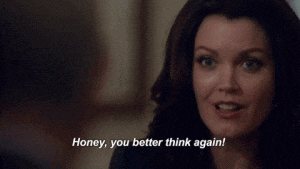https://lib.dr.iastate.edu/cgi/viewcontent.cgi?article=2395&context=rtd
Martinez-Sheperd, Ivonne. “Portrayals of Women in Prime Time Reality TV Programs.” Iowa State University, . Retrospective Theses and Dissertations, 2006.
In this Thesis paper written by Ivonne Martinez-Sheperd, Ivonne examines to which extent women are shown and portrayed on reality TV shows. She examines a census of reality shows aired in June to July of 2006 from four major TV networks: ABC, CBS, NBC, and FOX. Unexpectedly, she deduces that women are portrayed positively in terms of roles, behaviors, and appearances.
This paper is very useful and important to our research project because of the sheer amount of statistics data it provides on gender representation in American Television. Not only does it provide concrete percentage data of female demographics in American television, but also it provides qualitative data on the kind of roles women played in those reality TV shows. This data can be used to show trends/changes in the portrayal of women in television by comparing Ivonne’s observations with that of other articles or reports.
http://prx.library.gatech.edu/login?url=https://search.proquest.com/docview/1661077194?accountid=11107
Pasztor, S. K. (2015). The gendered world of work in TV programming and the media industry. Media Report to Women, 43(1), 12-20.
Sabrina Pasztor discusses and argues on the existence of occupational segregation and glass ceilings in media. She begins her essay describing gender roles and expectations in the 1950s when television started to become the main source of media for most households in America. She then goes on to describe how many television shows reflected career expectations given to women at the time in the section “Gender Role Portrayals on Television: 1950s-1960s”.
This essay is extremely useful because it provides specific examples of TV shows in the past and how they portrayed gender roles in terms of the careers they portrayed. She also analyzes women’s roles in families and how that was also portrayed in television shows as well. Furthermore, she continues to analyze trends in the portrayal of women’s careers in the 1970’s all the way up to the 1990’s, which makes this essay an excellent source of information about how women’s careers portrayed in television have changed over time.
Bahadur, Nina. “Why We Need These Kinds Of Women On TV.” The Huffington Post, TheHuffingtonPost.com, 13 Nov. 2012, www.huffingtonpost.com/2012/11/13/women-in-the-media-female_n_2121979.html.
Huffington Post writer, Nina Bahadur, claims that female TV and film characters are still being assigned to specific gender roles and are often sidelined as a character. She uses one main study as a central point to back-up her statement. She cites a study done by a sociologist who analyzed almost 12000 speaking roles in modern-day television. The study pointed out many common patterns often seen with female characters. Some of those patterns have to do with appearances but also the type of careers the female characters had in the show.
This source is useful because the specific study cited in the essay provides useful information on the differences of gender roles between men and women with specific quantitative data. This data can be later used in our research to show how women’s jobs are shown differently than men’s jobs on American television.
https://www.tandfonline.com/doi/full/10.1080/15205436.2016.1212243
Alexander Sink & Dana Mastro (2017) Depictions of Gender on Primetime Television: A Quantitative Content Analysis, Mass Communication and Society, 20:1, 3-22, DOI: 10.1080/15205436.2016.1212243
This article statistically analyzed prime time television by randomly sampling shows across 9 cable networks and broadcasts. It concluded from its analysis that modern prime time television is not at a “golden age” for women. However, it does conclude that some gender stereotypes have decreased compared to previous decades such as the existence of dominant men and/or sexually provocative women in the show.
This article presents very useful data since it is an almost unbiased, statistically based report that provided quantitative data on exactly what career roles women are shown to have played in modern television. This data can be compared to data from the past given in other articles to show the changes in the portrayal of women’s careers in American television.
Jack Glascock (2003) Viewer perception of gender roles on network prime‐time television, Communication Research Reports, 20:2, 173-181, DOI: 10.1080/08824090309388813 https://doi.org/10.1080/08824090309388813
Unlike other studies done, this study examined the audience’s perception of sex roles in American television rather than have the writer report about his/her observations on sex roles in American television. A total of 321 college students were asked to rate major female and male characters in comedies and dramas using the Bem Sex-Role inventory. Jack Glascock concluded that both male and female characters were perceived similar to real life people. However, dramas tended to stereotype each sex more than comedies did.
This article presents us a unique piece of information: public opinion. Rather than provide quantitative or qualitative data on the portrayal of women’s careers, this article presents data on how the audience today views women’s careers and their opinions on how the female character’s career differs from the male character’s career.
Hess, Donna J, and Geoffrey W Grant. “ Prime-Time Television and Gender-Role Behavior.” Teaching Sociology, vol. 10, no. 3, Apr. 1983, pp. 371–388. 3.
https://www.jstor.org/stable/pdf/1317366.pdf?refreqid=excelsior%3A7b00039695e53ad92cd58e24764ddafb
In this article, Donna Hess and Geoffrey Grant discuss the impact prime-time television on gender roles and views of gender roles of television watchers. They also deeply discuss specific kinds of behaviors shown in television shows and how they reflect gender roles in society. They also provide statistical data on gender demographics in prime-time television shows. Overall this article is more of a report than an opinion article as it provides more data and qualitative observations rather than opinions and statements.
This article is a great piece of information surrounding the different kinds of behaviors assigned to gender roles. Multiple charts providing statistical data on behaviors specific to each gender are provided throughout the article. In addition, the piece also compares scenes in different TV shows to outline the key differences in behaviors between female and male characters. Overall, this piece is very important to our research because it pays specific attention to differences in gender roles via analysis of behaviors in prime-time television shows.

